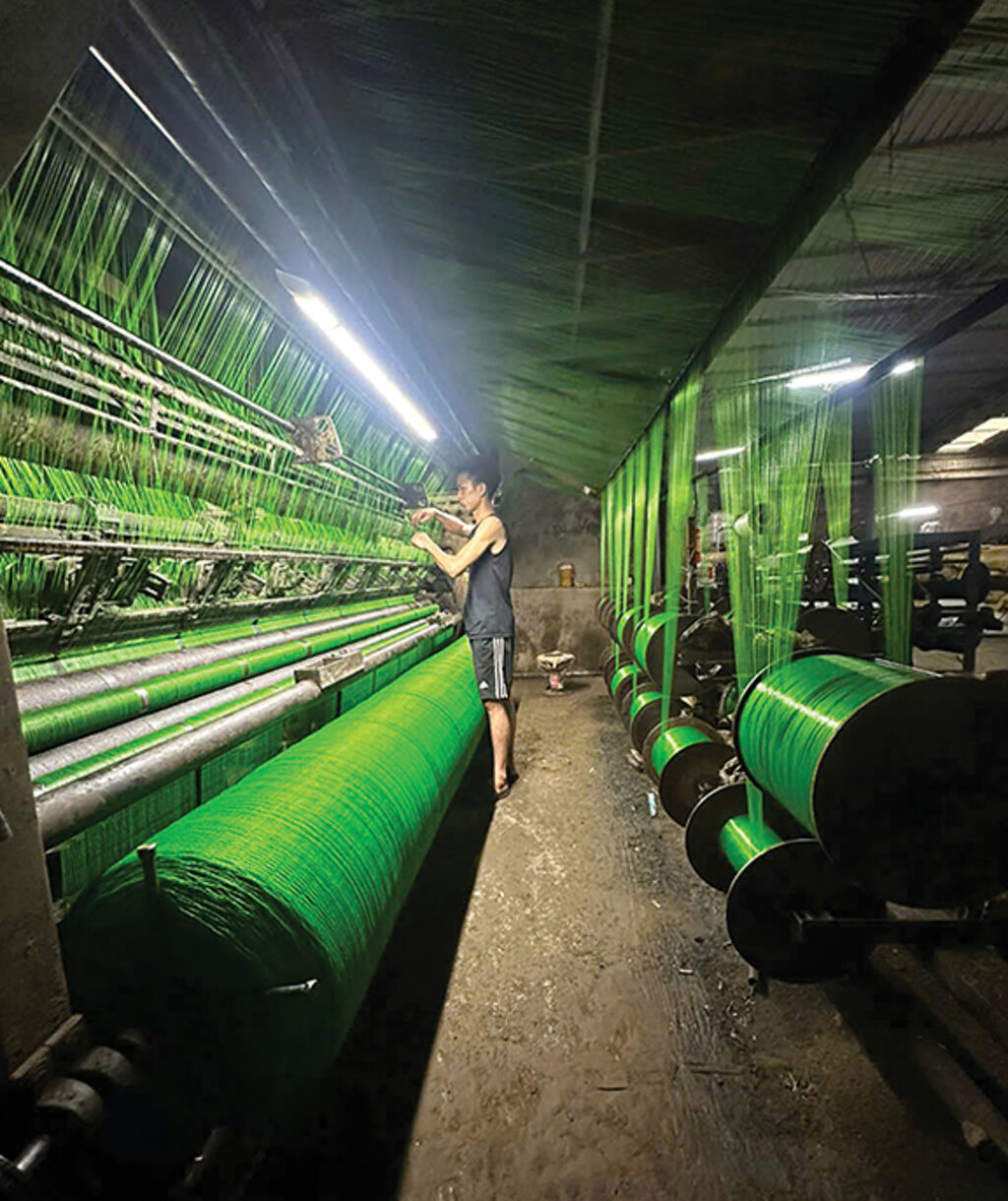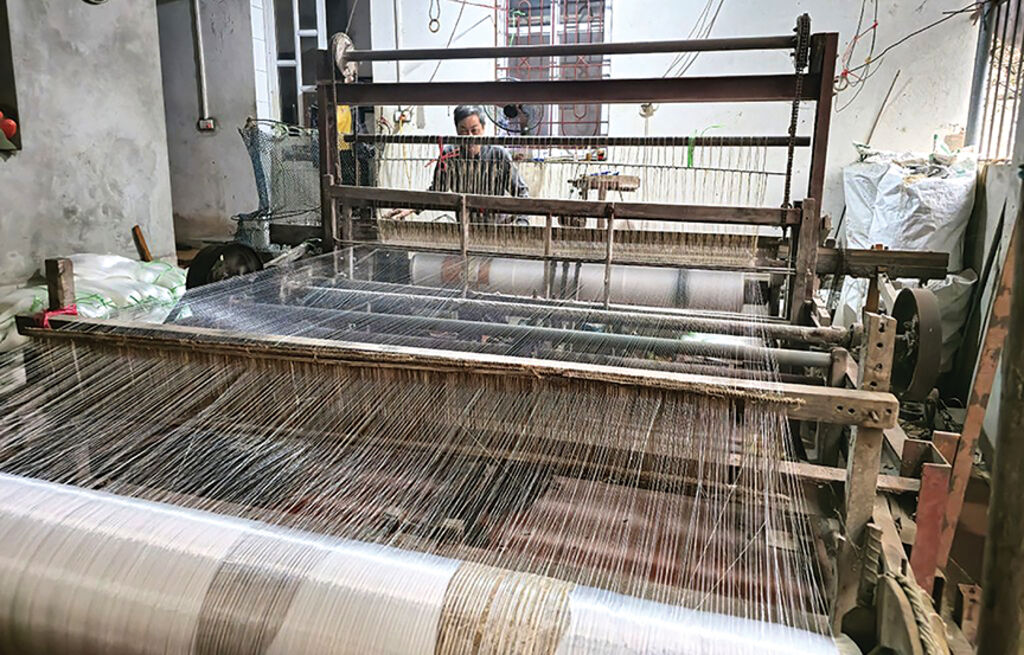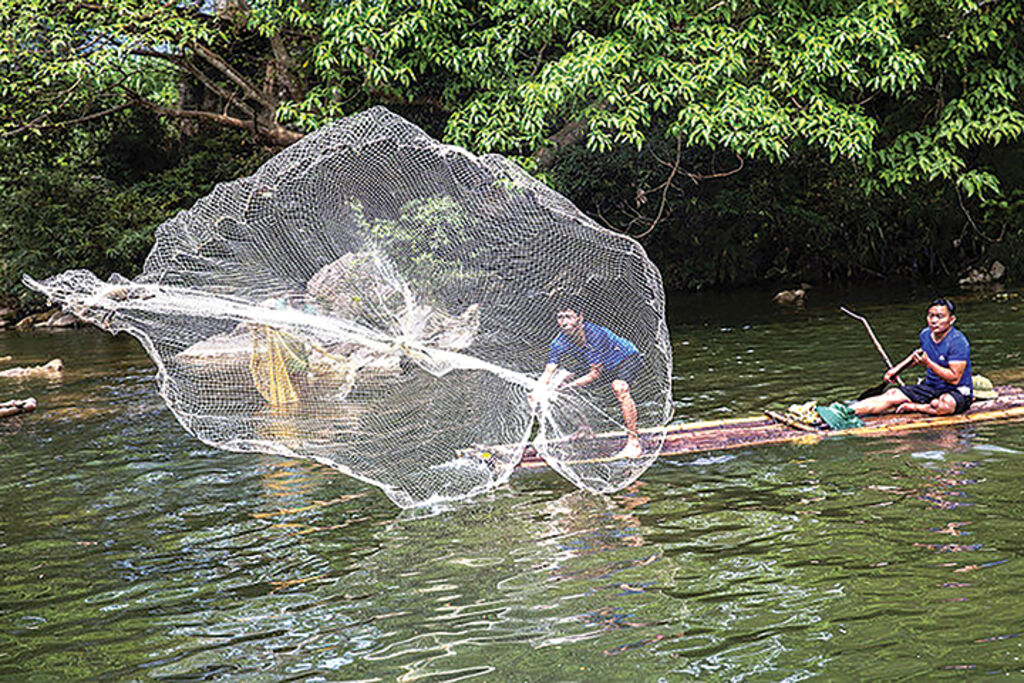 |
| Weaving nets by industrial machinery at Truong Tam Agricultural Materials Production and Trading Cooperative__Photo: Nguyen Thi Tam |
Located in landlocked, flat-lying Phu Xuyen commune of Hanoi, Van Lang village is surprisingly famous for its traditional craft of weaving cha nets, which are used to catch fish and shrimps in rivers.
In earlier times, the village produced both single-layer and three-layer nets. The single-layer nets, with a mesh size of around two centimeters and a width of 10 to 15 meters, were designed for shallow waters less than half a meter deep. The sturdier three-layer nets, with similar dimensions, were suited for deeper waters of a depth of up to three meters.
According to village chief Nguyen Van Dinh, Van Lang was once renowned for silk weaving. But as master silk weavers passed away, the craft gradually disappeared. In 1980, two villagers, Pham Van Quynh and Dang Van Moc, traveled to Hai Hau district in Nam Dinh province (now Hai Hau commine, Ninh Binh province) to learn the art of fishing net weaving. Returning home, they passed on their new knowledge to fellow villagers.
 |
| Semi-industrial loom for weaving nets in the past__Photo: https://tuoitrethudo.vn |
From that moment, the fishing net craft grew steadily. By 2012, the Hanoi People’s Committee officially recognized Van Lang as a traditional cha net weaving village - a milestone that confirmed its cultural and economic significance.
Preserving tradition, expanding horizons
A cha net is more than just a tool for catching fish and shrimps in rivers. Have you ever wondered how a net is made and what other uses it might have beyond fishing?
In the past, nets were made from natural fibers like jute or coir, with foam floats and lead sinkers. Craftsmen would first prepare the threads using a bamboo spinning wheel, winding them onto wooden shuttles and then into bamboo netting needles. From there, the painstaking weaving process began.
 |
| Van Lang’s fishing nets are used to catch fish in rivers__Photo: VNA |
The greatest challenge lays in attaching floats and sinkers with precision so that the net could withstand strong currents. Only the most experienced hands could achieve even distribution, creating a net defined by perfect meshes and balance - a tool both reliable and effective in the water.
By the mid-1990s, Van Lang villagers began shifting to modern materials. Natural fibers gave way to monofilament threads and nylon made from high-density polyethylene, while electricity-powered twisting systems and wooden looms replaced manual methods.
Today, many households have invested in industrial machines to boost productivity and diversify their output. Families often specialize in a single type of product, ensuring both variety and quality. The once simple cha nets are now part of a wider portfolio: agricultural nets, construction safety nets, golf and football nets. These products are not only sold across Vietnam but also exported to Laos, Cambodia and the Republic of Korea.
 |
| Football nets are among Van Lang village’s products__Photo: Phan Tuan Anh/VNA |
Local authorities are working alongside villagers to both preserve tradition and open up new opportunities. Training sessions on e-commerce skills are helping producers reach wider markets. At the same time, cultural initiatives aim to transform Van Lang into a tourism destination. The village is now part of a broader craft village tour that links a number of traditional craft villages in Phu Xuyen and Chuong My communes of Hanoi.
This dual approach - modernizing production while celebrating heritage - ensures that Van Lang’s cha net weaving not only survives but thrives, continuing to make together threads of livelihood, tradition and cultural pride.- (VLLF)









